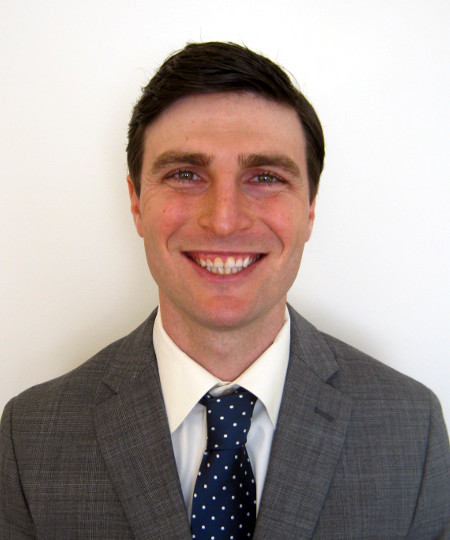 What is your name, title and institutional affiliation?
What is your name, title and institutional affiliation?
R. Taylor Sundby, MD
Advanced Clinical Fellow
Pediatric Oncology Branch, National Cancer Institute, National Institutes of Health
What is your role, ie what do you do?
After completing my pediatric hematology-oncology fellowship, I was given the opportunity to continue my training at the NIH as an advanced fellow with a focus on NF1. During this fellowship I have gained additional expertise in genomics and bioinformatics research under Dr. Jack Shern’s mentorship as well as specialized training in clinical care for patients with neurofibromatosis from Dr. Brigitte Widemann and her team. This experience has been further enhanced by close collaboration with Dr. Hirbe (NF1 specialist) and Dr. Chaudhuri (cell free DNA (cfDNA) expert) at Washington University in St. Louis.
In this role, I have had the opportunity to work with clinical samples from processing through analysis, learning and designing new bioinformatic techniques to answer our scientific questions. Additionally, I see patients with NF1 and NF1-associated complications through our NF1 natural history study and clinical trials in atypical neurofibroma and malignant peripheral nerve sheath tumor. One aspect of this position that I have particularly enjoyed is the opportunity to work along side teams at other institutions, both clinically and in research, to help provide patients with the best treatments and diagnostics possible. The NF community has been incredibly welcoming.
Please share your favorite discovery from your NF research. What makes this particular discovery rise to the top?
The leading cause of mortality in NF1 is malignant peripheral nerve sheath tumor (MPNST), an aggressive soft-tissue sarcoma that is often refractory to chemotherapy and radiation therapy. Patients have significantly better outcomes when MPNST is diagnosed early and can be removed surgically. Early diagnosis of MPNST, however, is difficult because MPNST arise from within benign precursor tumors called atypical neurofibroma (AN) and plexiform neurofibroma (PN). Current techniques, such as imaging and tissue biopsy, perform poorly when cancerous and non-cancerous tumors are intermixed.
To address this clinical challenge, in collaboration with Dr. Hirbe and Dr. Chaudhuri’s labs, we recently demonstrated that we can use circulating genetic markers (cfDNA) from a patient’s blood to accurately and non-invasively determine whether a patient has a non-cancerous PN or cancerous MPNST. Using plasma cfDNA circumvents the challenges of tumor heterogeneity and sampling biases that limit imaging and tissue biopsy. We envision that, in the future, NF1 disease states will be molecularly characterized from blood drawn at patients’ local labs. This has the potential to improve upfront detection, risk stratification, surveillance, and molecular therapeutic target identification. Furthermore, this would expand patient access to NF1 expertise and may adjudicate equivocal or discordant radiographic and tissue biopsy findings.
In your mind, why is data sharing/open science important? How has this practice improved your research?
Data sharing and open science is important for transparent, reproducible science.
Open science is especially critical for the study of rare diseases like NF1. Advanced statistical analyses and algorithms using artificial intelligence/machine learning are “data greedy” and require large cohorts to validate studies. It is near impossible for any single center, even if a major referral hub, to sufficiently power these studies (especially when looking for impactful but relatively low-incidence events like malignant transformation of PN/AN to MPNST in NF1).
Furthermore, open science enables investigators with diverse areas of expertise to repurpose research data for novel analyses that may not have been evident to the original study team. I am, for example, aware of at least once instance where our raw cfDNA data on Synapse is being “reused” in a very different analysis for validation of the groups’ exciting yet-to-be-published findings.
Finally, open science data collections, like Synapse, are especially important for “evening the playing field” for under-resourced and/or early stage investigators. A key for securing funding is to demonstrate project feasibility in pilot data. This, however, can be a barrier to investigators since pilot data generation is often an expensive/resource-intensive endeavor with unclear yield. Existing data from other investigators, however, can be leveraged to prioritize efforts and lower the costs of feasibility studies. I have personally benefited from open science in this way.
Where do you see NF research going in the next five years?
There is an increasing awareness among NF researchers that powering impactful, multi-institutional studies will require a degree uniformity in data collection and annotation. I envision the development of a common data model (CDM) and data language that will underpin NF investigator’s individual efforts. This structure will enable meaningful concatenation of datasets and foster collaboration to move the NF field forward.
Want to learn more about Dr. Sundby’s researcher? Check out these awesome resources.
- Application of cfDNA to non-invasively distinguish PN from MPNST:
- Layperson’s YouTube video on research (early stage of project, results subsequently improved w/ increased sequencing depth): https://www.youtube.com/watch?v=xfS8ucDg_mA&list=PLuynHG4VehDHjxBn5g3uyjbOcmOs6j5aH&index=3&t=1095s
- Paper: https://journals.plos.org/plosmedicine/article?id=10.1371/journal.pmed.1003734
- Liquid biopsy in pediatrics:
- Biomarkers for MPNST:
- Children’s Tumor Foundation (CTF) patient-led panel on biomarkers in MPNST: https://youtu.be/RGevLGvQgoQ
After completing undergraduate studies at Haverford College, Dr. Taylor Sundby received his M.D. from the Vanderbilt University School of Medicine in 2014. This was followed by his pediatric internship and residency training at the University of California San Francisco where he was a member of the Clinical and Translational Science Pathway, working with pediatric geneticist Dr. Joseph Shieh. Taylor joined the combined Pediatric Hematology and Oncology Fellowship training program at the National Cancer Institute (NCI), Pediatric Oncology Branch (POB) and Johns Hopkins University in 2017. In his fellowship, Taylor worked under the mentorship of Dr. Jack Shern in the Pediatric Oncology Branch gaining expertise in genomics and developing non-invasive techniques for cancer surveillance, focusing on cancer predisposition syndromes and rare tumors. His research using cell free DNA to distinguish benign from malignant tumors in the cancer predisposition syndrome neurofibromatosis type 1 (NF1) was selected as an NCI Center for Cancer Research “Top Scientific Advance” and has been nominated for the national Clinical Research Forum’s “2022 top 10 Clinical Research Achievements.” In addition to his research, Taylor’s dedication to resident education and patient care was recognized in his selection by the Johns Hopkins Pediatrics Housestaff for the Omolara A. Olaniyan, M.D. Fellowship Appreciation Award. Taylor is currently an advanced clinical fellow in the NCI POB, gaining additional experience in bench research as well as expertise in clinical care for patients with cancer predispositions.



